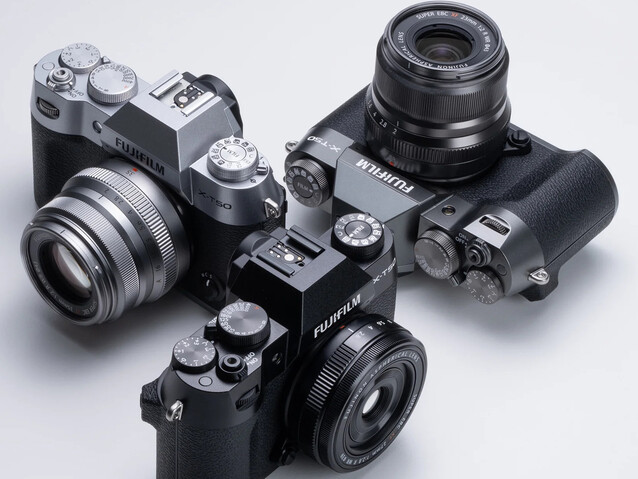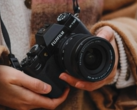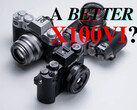CheckMag | Panasonic Lumix S9 - death knells for APS-C, Micro Four-Thirds or just a course correction for bloated camera pricing?

What is the Panasonic Lumix S9 trying to be?
As we have reported before, and was confirmed by the announcement, the Panasonic Lumix S9 is a creator- and video-centric camera with a compact form factor. Impressively, the Lumix S9 comes in even more compact than the Fujifilm X100VI. More importantly, it has a feature set to challenge the X100VI — including IBIS and a focus on colour science — with the retro-inspired looks, to boot. More importantly, the Lumix S9 has the same full-frame sensor as the Panasonic Lumix S5II, which should make it an incredibly powerful little package, likely exceeding the likes of Fujifilm's similar-sized APS-C options in terms of technical capability.
Even Micro Four-Thirds, champion of “dynamite comes in small packages” is hard-pressed to compete with the packaging the Panasonic Lumix S9 has to offer. Size — both of the sensor and the body — isn't the only factor when considering a camera, however, and the Lumix S9 surprisingly seems to deliver on many other fronts, as well. Namely, it uses the L-Mount, which has grown steadily since its launch in 2018 and offers a wide selection of high-quality lenses for basically any application.
Most importantly, however, the Panasonic Lumix S9's incredible pricing might spell doom for camera systems that depend on small sensors to shrink down the hardware footprint.
$1,499 for a compact, full-frame camera is very competitive
Now, as mentioned previously, compact full-frame cameras are nothing new. Sony has had the ZV-E1 (currently $1,898 on Amazon) series out for a good while now, and the Sigma fp (curr. $1,880 on Amazon) is also ridiculously small while also being cheaper. However, the Panasonic Lumix S9's $1,499 price tag comes in under both of those cameras.
$1,500 is certainly not pocket change, but compared to the likes of Fujifilm, the Panasonic Lumix S9 is in a stellar position, since it comes in at $200 less than the Fujifilm X-T5 (curr. $1,780 on Best Buy), although the X-T5 might have a leg-up over the Lumix in some areas — it lacks the X-T5's dual SD card slots, for example.
Whether the Lumix S9 is the camera for you depends on your use case and how much you value tactile controls, although it does feature an articulating screen, dual dials, and a separate mic port, meaning it is likely to be at least somewhat competent in a variety of conditions — especially video. The Lumix S5II (curr. $1,797.99 on Amazon) that shares the same sensor as the Lumix S9 is also favoured among video creators, so the Lumix S9 could even serve as a replacement for its much larger predecessor in some cases.
Given the Lumix S9's features and software — 6K open-gate video capture with 4:2:0, 10-bit capture alongside the dedicated LUT button and new colour science — it could easily be a viable alternative to the likes of the Fujifilm X-T50 and X100VI. With the compact size, it could even be a M4/3 killer, since the lower starting price eliminates one of the biggest drawbacks of going for a full-frame camera — expense.
What's even more damning for the likes of Fujifilm and the other players in the compact camera space is how age affects pricing. While the Sony ZV-E1 currently sells for the aforementioned $1,898, it launched at $2,199.99. Applying the same logic to the Lumix S9, photographers and videographers won't have to wait long for the small full-frame camera to reach somewhere in the region of $1,000–1,200, at which point, the value is tough to deny.
A shot across the bow for overpriced APS-C cameras
Fujifilm's recent launch of the X-T50 highlights one of the biggest problems with small-sensor cameras in the current photography and videography landscape, and the Panasonic Lumix S9 may well challenge the status quo, much like Sony did when it brought mirrorless cameras into the mainstream. While the X-T50 was supposed to be part of Fuji's entry-level camera line-up, it launched at $1,399.99 for just the body (or $1,499.95 for the lens kit) — a $400 increase over the $900 Fujifilm X-T30 II it replaces. A similar trend can be seen with Fuji's other cameras — the less expensive X-S20 launched with a less drastic increase, but an increase nonetheless, coming in at $1,299.99 on sites like Best Buy. Even more frustrating for potential buyers is that Fujifilm's cameras don't seem to be losing value the way many others do. Even the X-T30 II still retails at $949 on Amazon, despite being nearly three years old.
It's also worth mentioning that people have been crying “APS-C is dead,” from the rooftops for years, now, and everyone from Fujifilm to Nikon, Sony, and even Leica are still making crop-sensor cameras. After all, there's more to a camera system than just the size of the body. In Fuji's case, there's colour science, shooting experience, and a rich history in film and tactile controls. Meanwhile, OM System and even Panasonic itself lean on a more compact, lightweight, affordable system to make a case for crop-sensor cameras — it's way easier to carry a 200 mm Micro Four-Thirds lens than it is to lug around a 400 mm full-frame behemoth, and they will give you the same field of view and similar background separation for wildlife photography, for example.
Once upon a time, though, crop-sensor cameras — especially Micro Four-Thirds cameras — led the charge when it came to features, like IBIS, and video quality for the price — often offering features like 10- and 12-bit video at a reasonable price long before the full-frame world caught up. This is where cameras like the Panasonic Lumix S9, however, are starting to bridge the gap and force cameras with smaller sensors into an even smaller niche by bringing similar or superior feature sets into a similar-sized body.


















